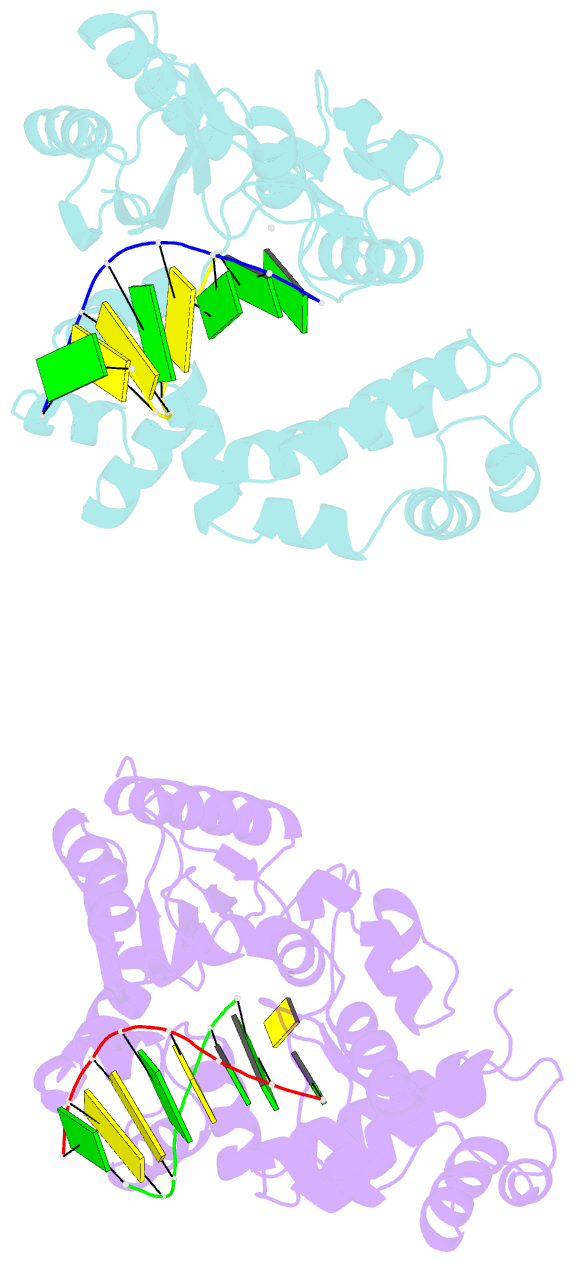Summary information and primary citation
- PDB-id
- 2bpg; SNAP-derived features in text and JSON formats;
DNAproDB
- Class
- transferase-DNA
- Method
- X-ray (3.6 Å)
- Summary
- Structures of ternary complexes of rat DNA polymerase beta, a DNA template-primer, and ddctp
- Reference
- Pelletier H, Sawaya MR, Kumar A, Wilson SH, Kraut J (1994): "Structures of ternary complexes of rat DNA polymerase beta, a DNA template-primer, and ddCTP." Science, 264, 1891-1903.
- Abstract
- Two ternary complexes of rat DNA polymerase beta (pol beta), a DNA template-primer, and dideoxycytidine triphosphate (ddCTP) have been determined at 2.9 A and 3.6 A resolution, respectively. ddCTP is the triphosphate of dideoxycytidine (ddC), a nucleoside analog that targets the reverse transcriptase of human immunodeficiency virus (HIV) and is at present used to treat AIDS. Although crystals of the two complexes belong to different space groups, the structures are similar, suggesting that the polymerase-DNA-ddCTP interactions are not affected by crystal packing forces. In the pol beta active site, the attacking 3'-OH of the elongating primer, the ddCTP phosphates, and two Mg2+ ions are all clustered around Asp190, Asp192, and Asp256. Two of these residues, Asp190 and Asp256, are present in the amino acid sequences of all polymerases so far studied and are also spatially similar in the four polymerases--the Klenow fragment of Escherichia coli DNA polymerase I, HIV-1 reverse transcriptase, T7 RNA polymerase, and rat DNA pol beta--whose crystal structures are now known. A two-metal ion mechanism is described for the nucleotidyl transfer reaction and may apply to all polymerases. In the ternary complex structures analyzed, pol beta binds to the DNA template-primer in a different manner from that recently proposed for other polymerase-DNA models.





